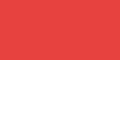Canton of Solothurn Canton of Soleure | |
|---|---|
 | |
| Coordinates: 47°9′N7°38′E / 47.150°N 7.633°E | |
| Capital | Solothurn |
| Largest city | Olten |
| Subdivisions | 122 municipalities, 10 districts |
| Government | |
| • President | Sandra Kolly-Altermatt |
| • Executive | Regierungsrat (5) |
| • Legislative | Kantonsrat (100) |
| Area | |
• Total | 790.45 km2 (305.19 sq mi) |
| Population (December 2020) [2] | |
• Total | 277,462 |
| • Density | 350/km2 (910/sq mi) |
| GDP | |
| • Total | CHF 18.209 billion (2020) |
| • Per capita | CHF 65,237 (2020) |
| ISO 3166 code | CH-SO |
| Highest point | 1,445 m (4,741 ft): Hasenmatt |
| Lowest point | 277 m (909 ft): Birs at the cantonal border in Dornach |
| Joined | 1481 |
| Languages | German |
| Website | www |
The canton of Solothurn or canton of Soleure (German : Kanton Solothurn; Romansh : Chantun Soloturn; French : Canton de Soleure; Italian : Canton Soletta) is a canton of Switzerland. It is located in the northwest of Switzerland. The capital is Solothurn.





